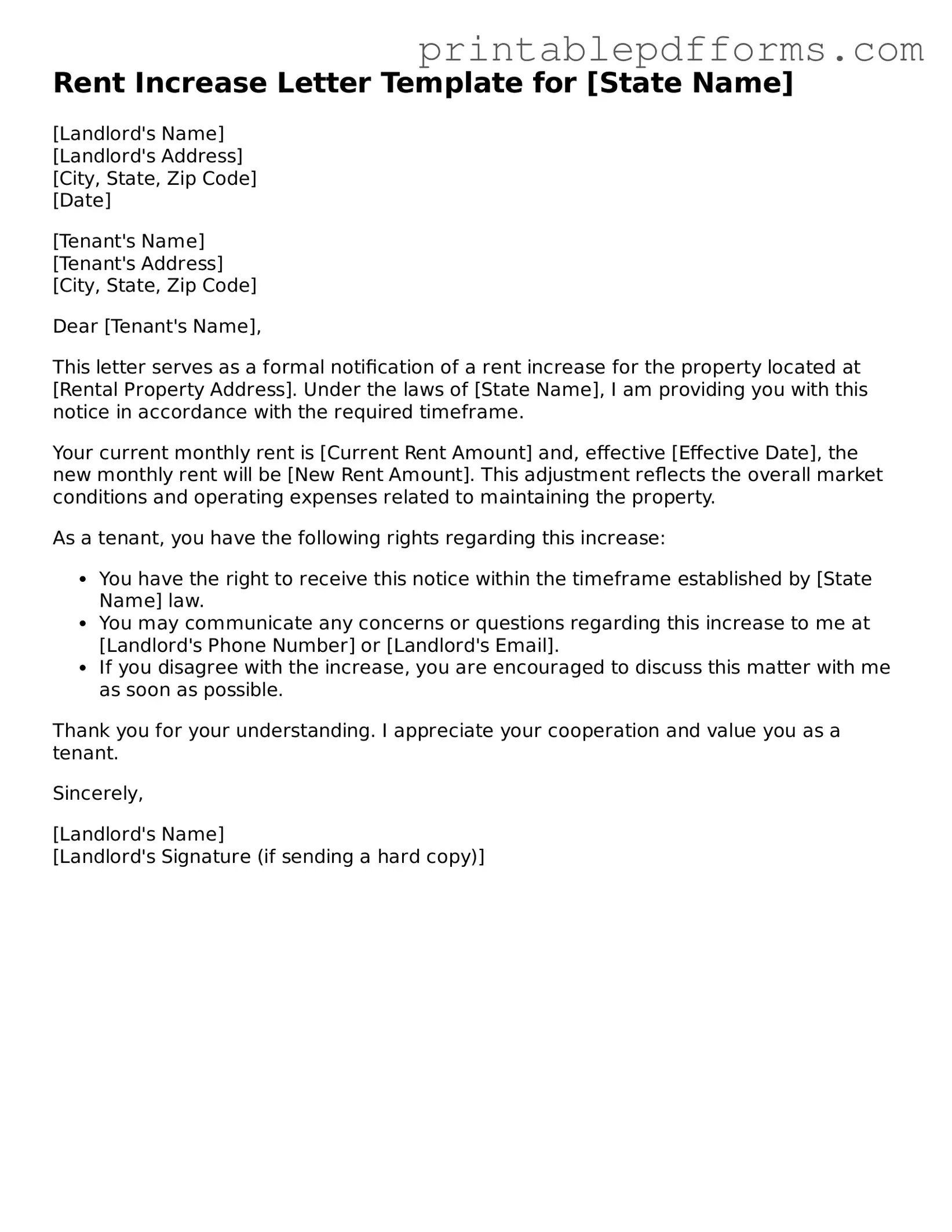Rent Increase Letter Template for [State Name]
[Landlord's Name]
[Landlord's Address]
[City, State, Zip Code]
[Date]
[Tenant's Name]
[Tenant's Address]
[City, State, Zip Code]
Dear [Tenant's Name],
This letter serves as a formal notification of a rent increase for the property located at [Rental Property Address]. Under the laws of [State Name], I am providing you with this notice in accordance with the required timeframe.
Your current monthly rent is [Current Rent Amount] and, effective [Effective Date], the new monthly rent will be [New Rent Amount]. This adjustment reflects the overall market conditions and operating expenses related to maintaining the property.
As a tenant, you have the following rights regarding this increase:
- You have the right to receive this notice within the timeframe established by [State Name] law.
- You may communicate any concerns or questions regarding this increase to me at [Landlord's Phone Number] or [Landlord's Email].
- If you disagree with the increase, you are encouraged to discuss this matter with me as soon as possible.
Thank you for your understanding. I appreciate your cooperation and value you as a tenant.
Sincerely,
[Landlord's Name]
[Landlord's Signature (if sending a hard copy)]
